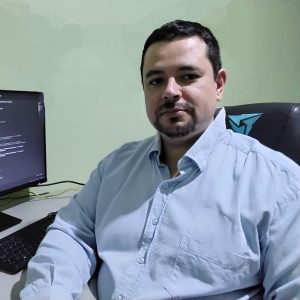Bionote

PhD in Electrical Engineering from UNESP Campus Bauru (2023), specializing in AI and Computer Vision for Precision Agriculture. Experienced in developing cloud and embedded ML/DL infrastructure for agricultural applications. Selected as a Youth Ambassador (2012) by the American Embassy and recognized among top candidates for Finland’s Millennium Youth Camp. Currently a Senior Software Developer in R&D at Jacto Agricultural Machinery, focusing on deep neural networks for precision agriculture, remote sensing, embedded AI, robotics, and digital agriculture technologies. Previously earned a degree in Industrial Mechatronics Technology (FATEC Garça, 2015) and a master’s in Electrical Engineering (UNESP Bauru, 2019). Recipient of the Mario Covas Award honorable mention and former CNPQ Science Without Borders scholar.
Presentation Abstract
The increase in the demand for food as well as the rise in the price of the inputs for ist production are factors that affect the agro-industry and the population. In this scenario, another challenge is the control of pests and diseases, including invasive species (weeds) in corn and soybean cultivars, which are the most produced grains in the world. Currently, identifying these plants is an unhealthy, laborious and error-prone process when carried out manually. When control is carried out by machines in a non-selective way, the farmer will be benefiting resistant species, making management inefficient and causing environmental impacts through the excessive use of herbicides. Therefore, there is a need for a low-cost embedded system for weed identification that can be used on tractors or directly on robotic platforms. Based on these challenges, this work proposed and explored the process of identifying and locating invasive plant species in corn and soybean crops using an artificial intelligence system with quantization and conversion of neural weights on low-cost hardware.
For this purpose, computer vision associated with deep learning was used to train Yolov5 convolutional neural network architectures on a set of public images of weeds harmful to corn and soybean crops. The architectures were analyzed based on the following metrics: confusion matrix, precision, recall, mean average precision (mAP) with a threshold of 0.5 and mean average precision with a threshold ranging from 0.5 to 0.95 (mAP 0.5:0.95). After
training, post-training quantization was used to compress the neural weights into 8-bit integer (int8) and 16-bit floating point (fp16) formats, and conversion to ONNX (Open Neural Network Exchange). These weights and the validation images were transferred to the Raspberry Pi 4 model B platform, where the models were evaluated using the metrics described. Inference was then made on the images in the validation set. The best validation results were obtained with the Yolov5l network with int8 quantization with mAP 0.5 of 0.815, precision of 0.834, recall of 0.772 and mAP 0.5:0.95 of 0.413. In inference, the network obtained 1 predicted image every 5.685 seconds.
The model with the fastest inference time was Yolov5n with weights converted to ONNX, where an inferred image was obtained every 0.376 seconds. In this context, the results show that the proposed approach is viable for use in the field on tractor/robot platforms. The advantages include the possibility of selective application of defensives, which conserves the environment, reduces costs and increases efficiency in eradicating weeds that are harmful to corn and soybean crops.
Co-Author: José Alfredo Covolan Ulson